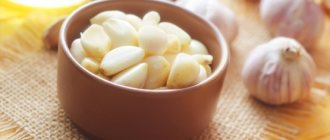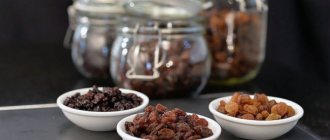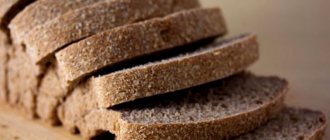How to choose a coconut
1. Weigh the coconut in your palm: if it is too light, it means it is empty.
The coconut should have some weight. 2. Shake the coconut and listen: is there liquid gurgling there or is the coconut dry? The coconut should gurgle.
3. Another recommendation: coconut eyes* should not be wet, much less moldy. The eyes should be dry.
*Three closed small holes on one of the poles of the nut.
A good quality nut is determined by its external characteristics. It is better to purchase coconut without packaging in order to carefully examine and touch it.
Before purchasing please note:
- an area with 3 holes, if the fruit begins to deteriorate, then in this place the process will be noticeable first;
- walnut surface – it should not have chips, cracks, dents or other types of damage;
- a ripe coconut, the shelf life of which has not yet expired, cannot be soft (whole or in individual areas);
- the shell should not bend under finger pressure;
- if you shake it, you will hear a splash of liquid internal contents;
- the fruit should have an attractive appearance and a light brown tint (too dark a color indicates that it is overripe);
- After splitting, the pulp should come away from the shell without difficulty.
You should not buy nuts:
- if there are traces of mold on the hairs (its presence inside the shell is also possible);
- soft to the touch (overripe or spoiled), with traces of dried coconut milk streaks;
- has surface cracks and other damage (juice could leak out through them, and harmful microorganisms could get inside);
- when shaken, it makes dull sounds of splashing liquid or does not make them at all;
- there are dents on the surface caused by careless transportation (it is likely that under the broken areas the pulp has already begun to rot);
- has multiple contaminations, which indicates a rodent attack;
- emits unpleasant odors;
- the flesh is not snow-white, and is poorly or not separated from the shell at all.
An important point: pay attention to the heaviness of the fruit; it is very light, most likely not yet ripe or has little juice. But the heavy one is worth choosing and purchasing.
Culinary tricks
Since coconut milk is an exotic drink, its characteristics should be taken into account when preparing food.
Coconut milk is not boiled in its pure form, as after boiling the drink will begin to curdle. During cooking, milk is added at the very last stage, heating it, but not bringing it to a boil.
Yes, you can cook oatmeal, semolina and rice porridge with coconut milk, but the drink must be diluted with water in equal quantities.
Coconut milk can be added to coffee immediately after preparing it. Dried milk is first poured into a mug, and only after that the coffee drink is poured into it.
The amount of milk is calculated based on the tastes and preferences of the person cooking.
Before you froth the coconut milk, you need to cool it by keeping it in the refrigerator for 12 to 24 hours. Then you need to open the jar (without shaking the contents), separate the thick part (cream), transferring it to another container. After this, the cream can be whipped with a whisk or mixer until stiff peaks form.
Powdered coconut milk is diluted with cold or warm water. For 200 ml of water you will need 2-3 tbsp. l. powder. First, the dry substance is poured into the container, and then water is gradually poured while constantly stirring the liquid.
When preparing sauces, coconut milk can be replaced with low-fat cream (10-15%). You can add regular milk and a little coconut to desserts without losing taste.
Knowing some tricks on how to handle coconut flakes can speed up cooking and make the dishes themselves very tasty and aromatic.
Coconut flakes are widely used in cooking. Most often it is used in the preparation of desserts: added to rolls, cakes and pastries, creams and sweet sauces are prepared with it. Coconut pulp is often used as a topping: it is used to decorate candies, curd cheeses, bars, cookies and chocolate bars.
It may seem unusual to use chips in savory dishes. Haute cuisine chefs add it to meat products to give them special piquancy and sophistication. And in Asian cuisine, an unusual sauce is popular - a mixture of chili peppers and coconut flakes.
What does it go with?
Coconut pulp goes well with almost all foods. It goes great with sweet chocolate and ice cream, nuts and fruits, meat and fish. It is used in sauces for hearty dishes, and as a breading for frying fish and cauliflower.
How to make it soft?
When the shavings have been sitting for a long time and have turned into a solid mass, the question arises: “How to soak coconut shavings?” You can try to save the product if it has not absorbed foreign odors. If the aroma of coconut pulp has changed, then the taste will be unpleasant. To soften coconut shavings, place them in a deep plate, add a small amount of water and leave overnight. The next morning, the chips will lose their former hardness and will be ready for use.
Multi-colored shavings are perfect for decorating baked goods. You can change the color of the chips using dry food coloring. To do this, pour the desired amount of coconut flakes into a plastic bag and add a little dye. The bag is tied into a knot, and then shaken and squeezed with your hands until the chips turn a new color.
A cake decorated with coconut shavings is the most popular decoration option. The dessert can be sprinkled with shavings only on top or added additionally on the sides. While it’s easy to sprinkle the top of the cake, difficulties arise with the side surface.
Another original way to decorate is to decorate the surface of the cake with cream and sprinkle with shavings. To do this, prepare any type of cream, which is placed in a culinary syringe. By squeezing out a small amount of the mixture, the cake is dotted with cream and sprinkled with coconut flakes on top.
The option of replacing coconut shavings depends on the recipe and the desired effect. You can replace coconut pulp:
- Grated nuts, confectionery powder or grated chocolate. This method is suitable for baked goods in which coconut flakes are used as a decoration and do not affect the taste.
- Coconut oil. In the filling or baking cream, you can replace the shavings with coconut oil. It will completely replicate the taste and smell of the original product.
- Cumin, cinnamon or ground crackers. This replacement option is suitable for savory dishes.
In recipes where coconut is the main ingredient, it cannot be replaced. It's hard to imagine a coconut cookie, cupcake or bounty cake without the main ingredient.
Tags: coconut, shavings, store
- Related Posts
- Cooking char fish
- Is ginger good for potency?
- How much semolina do you need?
« Previous entry
Types of Coconut Oil
Coconut oil is sold in many tropical countries - Thailand, Vietnam, Malaysia, India, Bali. It is so popular that it is also found in Russian stores. Coconut oil comes in two types:
- Cold pressed (unrefined). Extracted from fresh green coconuts using a press or centrifuge. The resulting oil has a light coconut aroma and taste, rich in fatty acids, vitamins and antioxidants. The frozen product is white, the liquid one is transparent. A heterogeneous composition is possible (with pieces of coconut flakes).
- Hot pressed (refined). The second method allows you to get more juice. The oil is produced from dry copra using chemical extraction or hot pressing. It is less aromatic and simpler in taste. The consistency is homogeneous with a golden hue. Such a product has much less useful properties - most of the valuable substances are lost during processing.
Refined is used in soap making. Unrefined is used to season salads and side dishes. It is ideal for moisturizing the skin of the body and face. To preserve the benefits of the product for as long as possible, you need to know how long coconut oil can be stored.
When stored for a long time, coconut, like any other type of vegetable oil, loses its benefits. The main chemical process that changes the composition of the product is oxidation. If its signs are too obvious, you should get rid of the spoiled product.
The following changes indicate that coconut oil has become unusable after expiration or due to improper storage:
- the color of the product changes from light to bright yellow;
- the smell becomes rancid;
- bitterness appears in the taste;
- mold forms on the surface;
- an unpleasant odor that is not typical for the product appears.
If there are no such signs, and coconut oil is stored in accordance with the rules, then the product can be used even after the expiration date. It can be used for cosmetic purposes for several months. The best option to use an expired product is to use it as a technical liquid, for example, for polishing furniture.
4. Opened coconut can be stored in the refrigerator for no more than 2 days.
5. Coconut water can be stored in a sealed container for about 1 week in the refrigerator. You can freeze it in an ice cube tray or freezer bags for a shelf life of 2 months.
6. Coconut milk can be stored in the same refrigerator, sealed, for no more than 3 weeks.
7. Fresh, freshly shelled coconut meat does well in water: refrigerate it, but try to use it within a week. Frozen coconut “meat” can be stored for up to 6 months.
8. Dried coconut shavings (can be dried at home) are stored for about a year in closed jars in a cool, dry, well-ventilated place.
9. Freeze-dried coconut flakes can be stored at room temperature for 2 months.
In Asian cuisine, coconut milk is an almost integral component for cooking. With the addition of milk you can:
- cook soup, cream soup or puree soup;
- stew vegetables with meat;
- cook a variety of sauces for meat, fish dishes or sweet pastries;
- prepare a variety of desserts;
- make sweet milkshakes;
- prepare fish dishes and snacks;
- make homemade yogurt;
You can bake pancakes, pancakes, pancakes, ice cream, and chia pudding using coconut milk. The drink is also used for soaking fish, marinating chicken breasts, making smoothies, cream for cakes, mashed potatoes, curry and much more.
To get the maximum beneficial properties from coconut oil, you should carefully monitor proper storage. After the jar is opened:
- close the lid tightly;
- store in dark plastic or glass;
- keep away from sunlight;
- prevent moisture from entering;
- store at a temperature of 5 to 8 degrees (if the product is cold-pressed and unrefined oil, and within 25 degrees for refined oil);
- do not put it in the refrigerator (the shelf life is unlikely to increase, but the beneficial properties and consistency will deteriorate).
Designate a shelf for the container in the refrigerator, away from the door, or a cabinet located far from the window and heating appliances.
Signs indicating that coconut oil has become unusable:
- the appearance of bitterness in taste and unpleasant odor;
- the hard substance loses its snow-white hue, and the soft substance ceases to be transparent;
- the oil begins to exfoliate, becomes yellowish, interspersed with crumbs and lumps;
- stains, traces of fungus and mold appear on the surface.
A spoiled product should be thrown away immediately to avoid harm to your own health.
Determine oil spoilage, what to do with expired oil
When stored for a long time, coconut, like any other type of vegetable oil, loses its benefits. The main chemical process that changes the composition of the product is oxidation. If its signs are too obvious, you should get rid of the spoiled product.
The following changes indicate that coconut oil has become unusable after expiration or due to improper storage:
- the color of the product changes from light to bright yellow;
- the smell becomes rancid;
- bitterness appears in the taste;
- mold forms on the surface;
- an unpleasant odor that is not typical for the product appears.
If there are no such signs, and coconut oil is stored in accordance with the rules, then the product can be used even after the expiration date. It can be used for cosmetic purposes for several months. The best option to use an expired product is to use it as a technical liquid, for example, for polishing furniture.
How and where to store coconut oil after opening?
The safety of the product depends on several factors:
- temperature;
- humidity;
- influence of light;
- tightness and type of packaging.
And now, in order...
Temperature
The ambient temperature affects the hardness of coconut oil: at 25⁰C and above it becomes liquid and fluid, at 10 - 24 - jelly-like, at 10⁰C and below - it hardens. For daily use and for ease of use, it is better to store it at high temperature.
The permissible range is from 5 to 25 degrees. The number of degrees is not as important as the presence of differences. It is temperature fluctuations that lead to premature spoilage of the product.
You can store coconut oil in the refrigerator. When using, separate the required amount from the total mass, and put the container back in the cold. The extracted part must be kneaded and warmed in your hands before use. You can melt the contents of the jar in order to pour it into another container by holding it under running hot water for a while.
Humidity
A high concentration of water vapor in the air contributes to premature oil deterioration, especially in hot weather and with regular temperature changes. Despite the sealed packaging, the product should not be left in the bathroom unless it is intended to be used for a short period of time.
Effect of light
One of the conditions for maintaining freshness during the warranty period is the absence of light. To prevent coconut oil from oxidizing and starting to taste bitter at home, it should be stored correctly, which means in the dark. Direct sunlight is especially harmful to the product.
Storage containers
Having opened the original packaging, you should decide how and when the product will be used, choose the method and place of storage. If a person plans to use it for different purposes (for dressing salads, as a cosmetic, etc.), then it would be more advisable to pour the contents into several jars. It is more convenient to keep it where it will be used: in the kitchen cabinet, on a shelf in the bathroom, bedroom or in the hallway bedside table.
It is best to store high-quality coconut oil in a dark glass or porcelain container with a tight-fitting or screw-on lid. These materials do not come into contact with the product and allow the contents to retain the necessary freshness and benefits longer.
After opening the original packaging, the product becomes vulnerable to the destructive effects of the external environment. High humidity, bright light and air are dangerous for him. Therefore, you need to store coconut oil in a dark, dry and cool place, always in an airtight container. If all conditions are followed correctly, the quality of the product will remain unchanged for a long time.
How to store coconut oil at home
Always store the container with the product in a cool, dark place at room temperature. Then it will be convenient to use it as a cosmetic product with a liquid consistency. You can store oil in the refrigerator for cooking. It will become thick. This product differs from other similar products in its longer shelf life, up to one year. Natural high-quality oil thickens at low temperatures and acquires a liquid consistency at above-zero temperatures.
How to preserve an open coconut at home?
Coconut whose integrity is compromised can be stored for no more than 2 days in the refrigerator at low temperatures ranging from 2 to 5 degrees. If the temperature is higher, rotting processes will begin; if higher, it will lose its taste.
To extend shelf life, please note the following:
- The pulp can spoil quite quickly; this is easy to understand by its bitter taste. It is better to fill it with water, so the shelf life will increase to 6 days. The taste is unlikely to be preserved, but it is quite suitable for adding to dishes.
- You should not place an open nut next to other vegetables and fruits so that the substances they release (especially ethylene in bananas) do not accelerate the ripening of the coconut. An open coconut very quickly absorbs all surrounding odors, so it is hermetically sealed.
- The best option: packing the nut in a sealed plastic container.
- The shelf life of the fruit will increase if you freeze it correctly; the pulp will last for 6–7 months.
- The milk should be poured into molds, then put into the freezer, so it will keep for 2 months (you shouldn’t keep it longer, the taste of the liquid will disappear).
- You should not freeze a whole coconut; first clean it by removing the shell and grinding the pulp with a blender or meat grinder. The pulp is divided into portions, sprinkled with milk and placed in containers.
- The coconut meat should not be thawed; it must be taken out immediately before use and eaten as is (otherwise the nut will lose its structure and become watery).
- Re-freezing of the product is not allowed.
Another homemade method for extending the shelf life of coconut involves drying it, which extends the shelf life by up to a year. The pulp is crushed, then dried in an oven, where the chips are heated at a temperature of 60 degrees for 4 hours. Then you need to cool the contents and put them in plastic containers or cotton bags.
An important condition: the chips are not stored in the refrigerator or freezer; the optimal place for them is a room in which there is no excess moisture.
In order for coconut to be stored longer, it needs to be provided with optimal conditions. Temperature, humidity and light parameters are of great importance.
Temperature
Before opening the peel, the nuts lie well in cool and dry rooms. In this case, the temperature should not exceed 20 degrees. When storing coconut for more than 1 month, there is a risk of its liquid turning sour and the pulp drying out.
Illumination
The nut should be stored in a dark place. It should not be exposed to direct sunlight.
Humidity
Air humidity parameters must be maintained at 70%.
In a refrigerator
After opening, the coconut must be placed in the refrigerator, where it retains its juiciness and taste for about two days. Even in the refrigerator, the length of time a nut is stored depends on the temperature.
For example, at temperatures from 0 to +5 degrees, the fruit will retain all its properties for seven to ten days. If the temperature is above +5, you should not keep the nut for more than a week. But if the temperature is stable at +5, the coconut will be fresh for two to three months.
When opening the nut, it is better to store the pulp and milk separately from each other. This will increase their freshness.
Expiration dates
In Russian stores you can find products from two countries: Thailand and India. The shelf life of coconut oils is the same in both cases. Tourists vacationing in Thailand often buy products by the glass. This oil has a short shelf life, since there is no need to talk about compliance with technical conditions during its production.
Information about the composition and storage methods of coconut oil is printed on labels. However, not all manufacturers consider it necessary to indicate this data. The shelf life largely depends on the production method:
- Homemade butter spoils quickly. The shelf life is only 14 days.
- Natural (unrefined), without additives or preservatives, it stays fresh throughout the year.
- Extracted by hot pressing - 2 years.
- The shelf life in capsules and ampoules is indicated on the packaging and is 1.5-2 years.
- The opened ampoule is used within two weeks.
- The shelf life of the product from Thailand is 6 months.
If you know how to properly store coconut oil, you can even extend its shelf life.
When talking about how to store coconut at home, you need to understand that the shelf life of any product directly depends on its storage conditions. For tropical “nuts”, humidity exceeding 70% and temperatures above 20 ºC are not allowed. In the refrigerator it will not spoil within 2-3 weeks. Moreover, its safety directly depends on the integrity of the peel. Damaged fruit should not be kept for more than 2-3 days, even in the refrigerator, otherwise there is a possibility of getting a spoiled and sour coconut.
Storing milk
Fresh milk from a ripe fruit can retain its original properties for no more than 24 hours, even when on the refrigerator shelf. The same product in a special sealed package can be preserved for 12 months or more, subject to the storage conditions specified by the manufacturer.
Once the factory package of milk is opened, its shelf life is reduced to 2 days. In this case, it is better to immediately pour it into a glass container, close it tightly and put it in the refrigerator. Cream that may appear on the surface of the liquid does not mean that it has begun to spoil.
Due to the increased fat content, freezing milk is undesirable. During the defrosting process, it will begin to separate, as a result of which it will lose its taste and beneficial qualities.
How can you tell if coconut oil has gone bad?
To ensure that eating coconut only brings pleasant experiences, you should make sure before eating that it is suitable for consumption. It’s easy to find out if a nut has gone bad by the following signs:
- darkening of the outer surface;
- the appearance of stains, dents and traces of mold on the skin (the liquid can disappear and turn sour if the integrity of the skin is damaged);
- drying of the pulp if it has been peeled;
- a dull and heavy sound when shaking milk if the coconut is not opened.
When closed, the nut is stored longer than after opening. You should not clean it prematurely; it is better to do this immediately before eating.
How to store
First, let's figure out what a coconut is. Most of us by this word mean a fruit with a dense brown shell and a fleecy surface. In fact, they don't grow like that. What we are used to seeing in stores are the kernels of palm tree fruits, the inside of a ripe coconut.
Young coconut
Young coconuts are green. They are considered the most juicy and tasty, they have almost no pulp, but a lot of water. Their shelf life is extremely short. After being removed from the tree, they should be kept in a cool place without direct sunlight at a temperature of +2 to +5 degrees and consumed within 3 days. They are almost impossible to find in Europe; they are not exported due to their short shelf life.
Whole
The shelf life of coconut from harvest to consumption is no more than 2 months. Please note that after removal from the tree, the fruit must be delivered to the store. This may take a month if transported by sea. To learn how to calculate how much to store and how to choose fresh, delicious coconut, read the article: how to choose. A whole coconut kernel has the longest shelf life provided that its surface is free of damage, cracks and other signs of deformation or deterioration. How to properly store coconut:
- It must be stored in a dark place without high humidity.
- The optimal temperature is up to +20 degrees Celsius, with a humidity level of no more than 70%.
- It is not recommended to store near fruits that emit ethylene (for example, bananas, apples, pears). During release, the substance accelerates the ripening process of other fruits nearby, and then their spoilage.
- The shelf life from harvest to consumption is no more than 2 months.
After opening
Once a coconut is opened, the time it can be stored is significantly reduced. This can only be done in the refrigerator. The optimal temperature is +5 degrees Celsius, no more than 3 days. Another important condition is that the open coconut must be covered with cling film, and only then put in the refrigerator.
Important! The pulp and liquid should be stored separately from each other, so they will stay fresh longer.
Water
The coconut water is poured into a clean glass container and sealed tightly with a lid. In this case, the shelf life in the refrigerator is up to 7 days. In the freezer, for example, in an ice tray, water can be stored for up to 2 months. After this time it is considered sour.
Pulp
The pulp of the exotic fruit can be stored in the refrigerator without loss of taste and nutrients for up to 7 days. When frozen up to 7-8 months. The beneficial properties are not lost. Read more about the pulp in the article coconut pulp.
Dried shavings
Dried coconut has a long shelf life. How to dry it at home, read the article shavings. Optimal conditions are a glass container with a sealed lid, a well-ventilated, dark, cool place without direct sunlight. Storage period - 12 months.
Milk
Read about how to make your own coconut milk. Optimal storage conditions are in the refrigerator in a container with an airtight lid. Duration 3-4 days. You can increase it up to 2 months by freezing milk or cream in the freezer.
How to drain the liquid before opening a coconut?
To prevent the sweet sticky juice from splashing all over all surfaces when opening the coconut, you should first drain the milk.
- using a sharp object, pierce a hole in the shell (using a thin nail and a hammer);
- it is important to place the nut firmly on the table surface to prevent it from turning over and sliding off;
- the hole is ready when you hear a sound similar to that of a soda bottle when the cap is removed.










